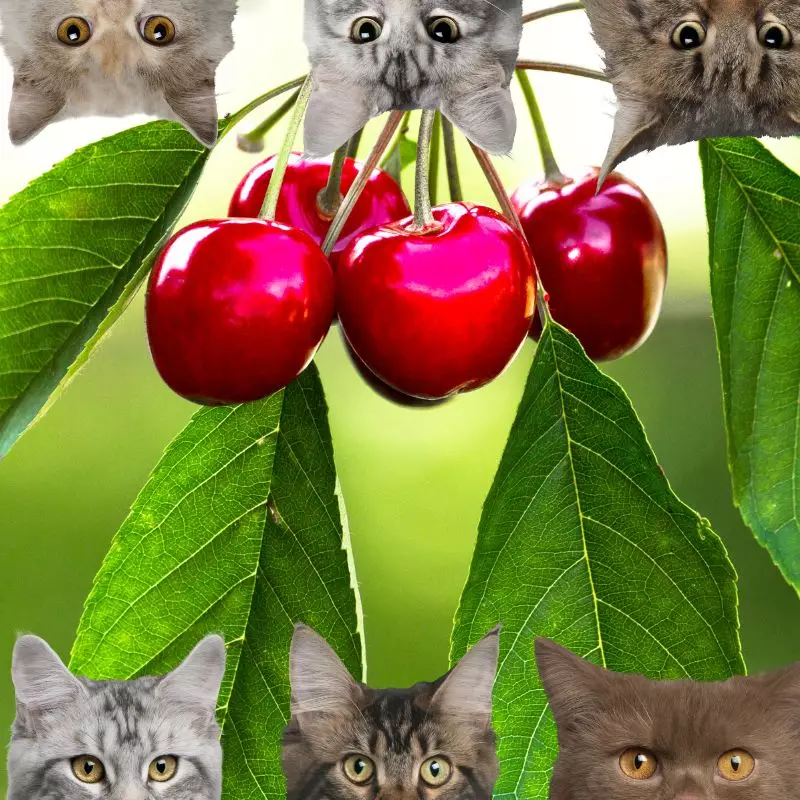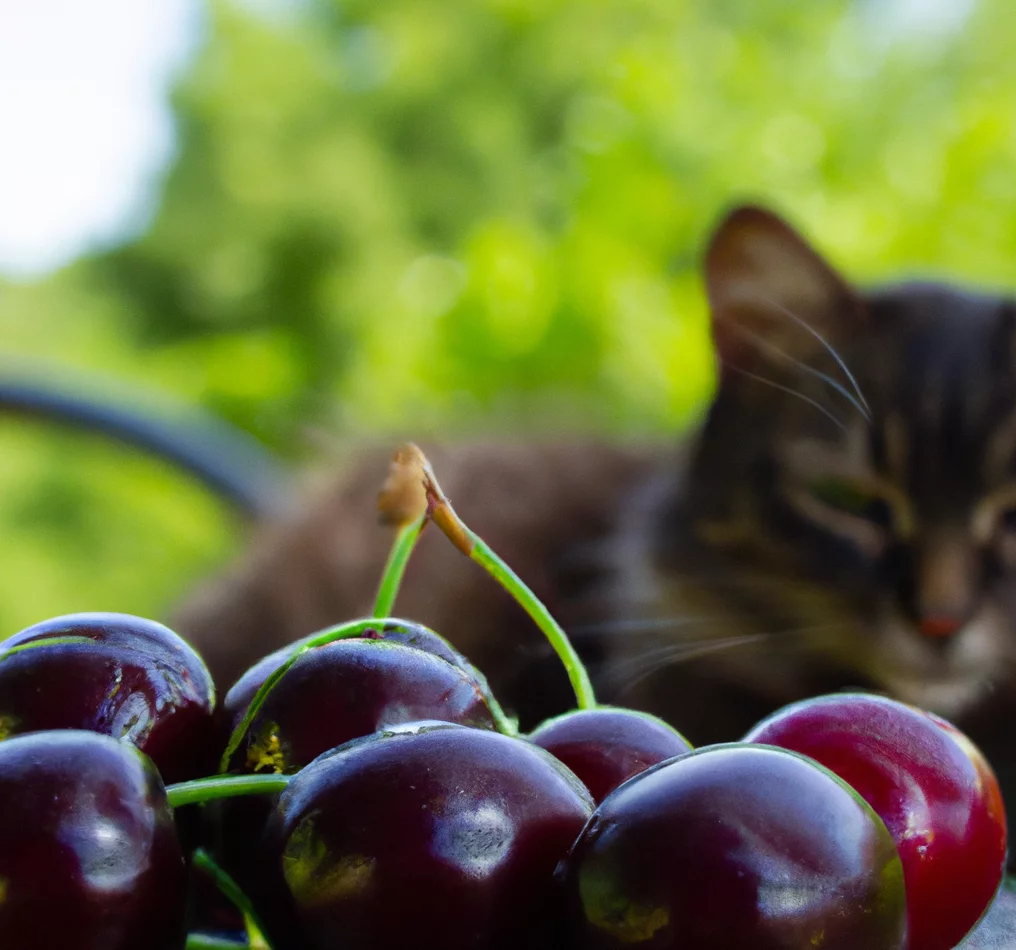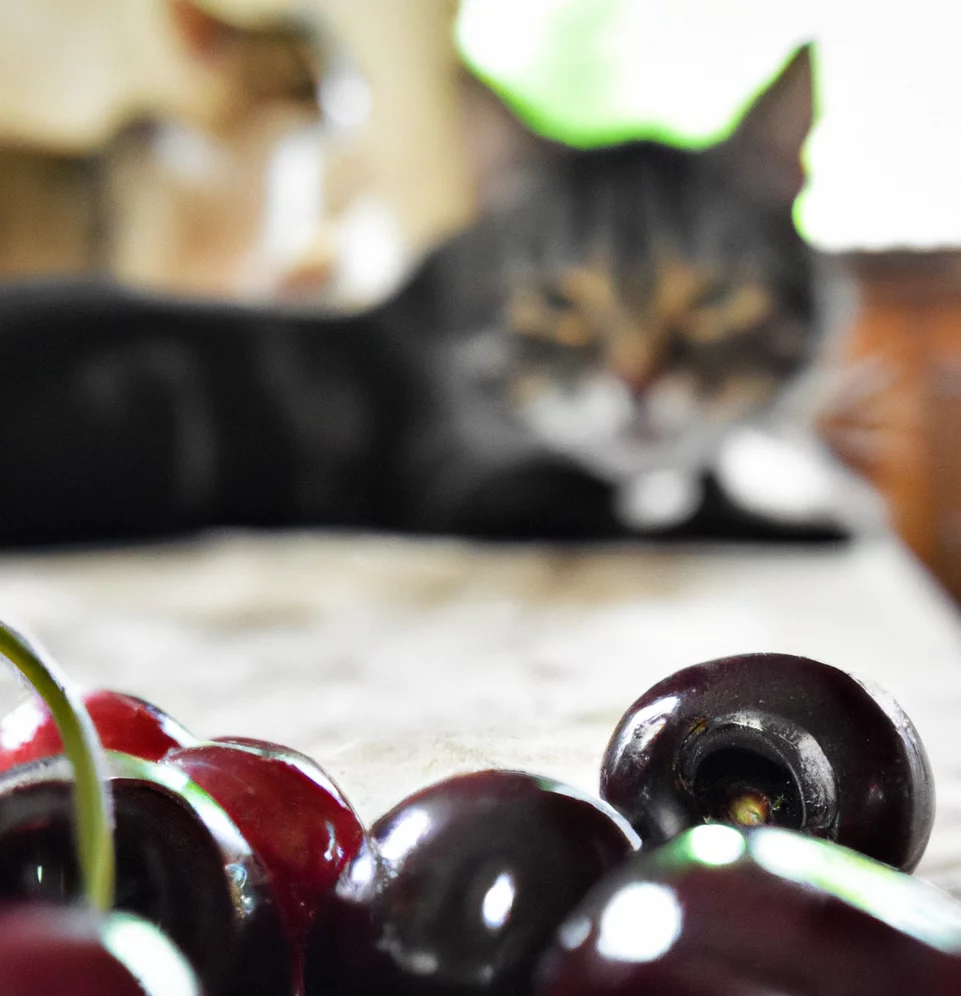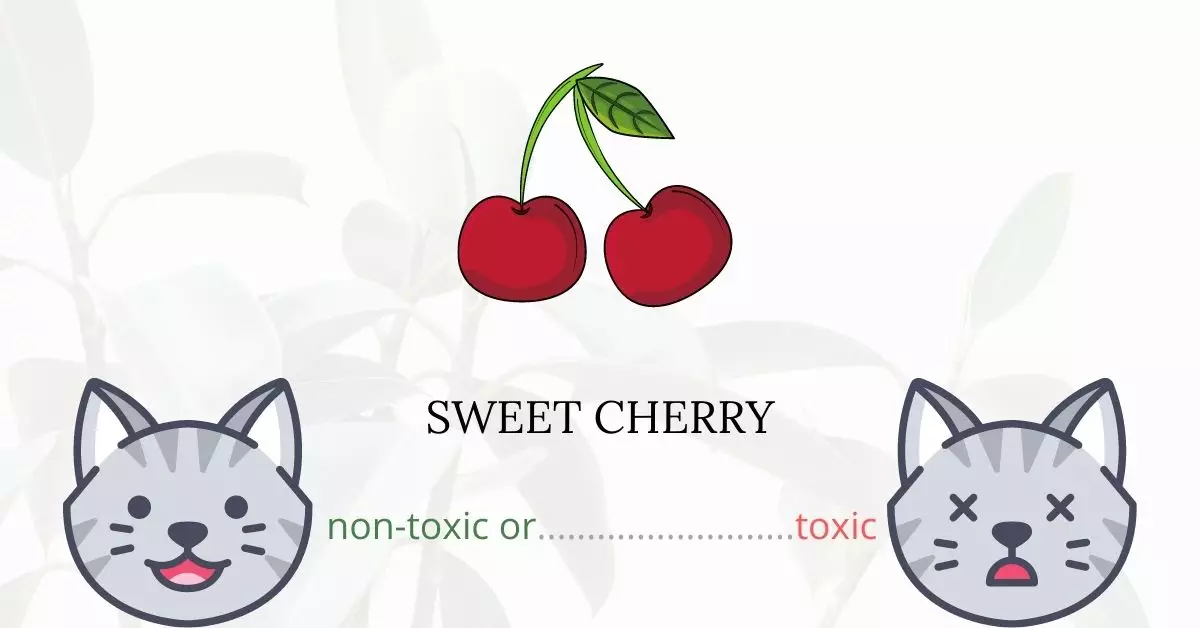Yes, certain parts of the sweet cherry plant are toxic to cats, with the exception of the mature fruit. The seeds, blooms, stems, leaves, and pits of the sweet cherry plant can all be poisonous to cats, becoming especially toxic during the withering period.
This article is meticulously crafted in collaboration with a team of seasoned Doctors of Veterinary Medicine (DVMs) who have generously contributed their expert knowledge to ensure the accuracy and currency of the information provided on the potential risks associated with sweet cherries and their impact on cats. Their insights are invaluable in shedding light on the intricacies of various plant substances and their effects on our feline friends. To supplement our findings, extensive research was also conducted using high-authority websites, such as ASPCA and PetMD, ensuring a comprehensive understanding of each plant discussed, in this instance, sweet cherries.
Cyanide, present in sweet cherry plants, is particularly harmful, acting by inhibiting cytochrome oxidase, an enzyme vital for cellular oxygen transport. Consequently, when a cat ingests parts of the plant, its cells are deprived of essential oxygen transport, leaving various organs in the body with insufficient oxygen support.
Clinical Signs of Sweet Cherry Poisoning in Cats

If your cat has been in contact with, ingested, or shown interest in cherries or any part of a cherry plant, it is crucial to remove them from the vicinity immediately and present a sample of the cherries to your veterinarian for precise diagnosis and assessment of potential cherry poisoning severity.
Consumption of sweet cherry plants usually induces mild to moderate toxicity in cats; however, ingestion of substantial amounts of the toxic components can lead to severe clinical symptoms. Here’s a breakdown of the clinical signs and the underlying causes:
- Bright Red Mucous Membranes: This occurs due to the cyanide inhibiting cellular oxygen transport, leading to hypoxia, thus causing the membranes to appear red as the body attempts to increase blood flow in compensation.
- Inadequate Oxygen Levels: The presence of cyanide interferes with the cytochrome oxidase enzyme, which is crucial for cellular oxygen transport, resulting in cells and, subsequently, organs being deprived of essential oxygen.
- Difficulty in Breathing: As the body struggles to compensate for the lack of oxygen, the cat may exhibit labored breathing, panting, or respiratory distress, in an effort to intake more oxygen.
- Dilated Pupils: This can be a result of the body’s response to reduced oxygen levels, where the sympathetic nervous system is stimulated, causing pupils to dilate.
- Shock: This occurs as a severe reaction to the lack of oxygen in the body’s tissues and may be accompanied by a rapid heart rate, weak pulse, and a drop in body temperature as the body goes into a state of emergency.
- Death: In severe cases where large amounts of toxic parts of the plant have been ingested, and without timely intervention and treatment, the condition can unfortunately lead to fatality due to multiple organ failures from inadequate oxygen supply.
Observing any of these symptoms should prompt immediate veterinary consultation. Prompt action can significantly increase the chances of recovery and mitigate the adverse effects of sweet cherry poisoning in cats.
First Aid and Treatment of Sweet Cherry Poisoning in Cats

Because sweet cherry poisoning limits oxygen intake by cells, the veterinarian may start therapy with oxygen supplementation. Fluid treatment and intravenous methylene blue administration may also be used to flush the cyanide from the body.
Methylene blue functions by converting ferric iron in hemoglobin (red blood cells) to ferrous iron. Methylene blue and mineral oil may be used together by the veterinarian. Mineral oil, when used as a cathartic, can help in quicker defecation and the elimination of hazardous material from the feline’s gastrointestinal system. As long as symptoms continue, the veterinarian’s treatment plan may be repeated.
Recovery from Sweet Cherry Poisoning in Cats

A cat has a fair chance of surviving cherry poisoning if a diagnosis is established quickly and treatment is effective. However, if the clinical indications were not detected until the fatal toxins of the cherry plant had been absorbed, the feline’s chances of full recovery are guarded to poor.
Prevention of Sweet Cherry Poisoning in Cats
To prevent cyanide poisoning in cats, remove all cherry trees from your cat’s environment. It is also advisable to be cautious while discarding unusable cherry components such as stems and pits. Keeping your cat indoors will also assist to reduce the chance of plant exposure.
If you love plants but have cats at home, check out these lists:





